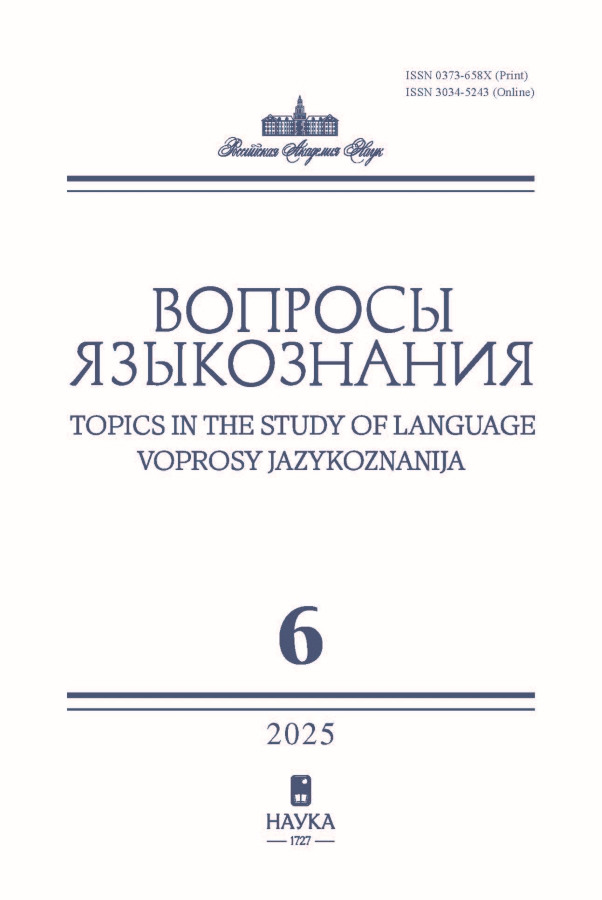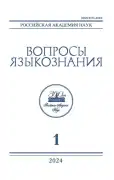No 1 (2024)
Articles
Semantics of the northern khanty salient article: definiteness, salience, and obviation
Abstract
Uralic possessive agreement markers often function as determiners. This paper presents a case study of the Northern Khanty (Kazym dialect) 2sg Possessive that developed into a “salient article”. The Salient Article is definite as it requires informational uniqueness and familiarity, but its distribution is narrower than the distribution of previously described definite determiner types. It is most commonly used with topical Subjects and in noun phrases with demonstratives, but its use is not obligatory across the board in these cases and is not limited to them. Furthermore, the Salient Article is subject to a constraint that is similar to the proximate uniqueness constraint of languages with obviation systems like the Algonquian: there may be at most one noun phrase with a Salient Article per clause (with the exception of noun phrases with demonstratives). I consider and reject two possible syntactic accounts of such distribution and instead propose a tentative semantic analysis that derives all the observed facts: the Salient Article marks the most salient discourse referent in the given context. (I understand salience as a graded property that a referent has to the extent that the referent is being attended to by the addressee following Roberts and Barlew). This study thus supplies another argument for the hypothesis that salience is an important dimension to determiner semantics cross-linguistically.
 7-38
7-38


Russian discourse word net ‘no’ in a contrastive perspective
Abstract
The article examines the functioning of the Russian words net ‘no’ and partly da ‘yes’ in comparison to other languages. The study identifies important features of the semantics and pragmatics of these words. Special attention is paid to the discursive uses of Russian net and their correspondences in English and German. A classification of discursive uses of net is proposed, some of which have counterparts in English and German, while others are simply omitted in translation. The specific features of discursive uses are largely determined by the subtle semantics of the central readings of Russian da and net. The same holds for English yes and no, as well as for German ja and nein. Even in the most direct uses of da and net, a distinctive characteristic of Russian dialogue is revealed: it is more important for the speaker to align their position with the interlocutor’s position than with the actual state of affairs. This characteristic underlies the richness of discursive uses, primarily represented by the word net.
 39-59
39-59


Antonymy in Russian sign language
Abstract
The article discusses signs-antonyms in Russian Sign Language from the point of view of how visual modality in which this language exists affects their internal structure. The article shows that the correlation between the structure and semantics of antonymous gestures in Russian Sign Language is built primarily on iconicity and the use of three-dimensional space. This reveals the uniqueness of antonymic relations in sign languages in comparison with those in spoken languages.
 60-84
60-84


Phrase prosody of a southern Russian dialect: Rogovatoe
Abstract
This paper deals with the phrase intonation of the Southern Russian dialect spoken in the village of Rogovatoe, in the Starooskol’sky district of the Belgorod region. The study is devoted to the analysis of the prosodic structure of various communicative categories: statements, yes-no questions, wh-questions, non-finality, imperative, and vocative. Based on the examination of more than 7000 sentences, I argue that the dialect of Rogovatoe uses only two monotonal pitch accents — H* and L* — as opposed to three bitonal accents of Modern Standard Russian. I also postulate two final boundary tones — H% and L% — for this dialect, while no proof of a phonological distinction between the high and the low phrase accents was found. Finally, the idiom of Rogovatoe employs the phonological distinction between the high and the low initial boundary tone — %H and %L. Therefore, the prosodic system of this Southern Russian dialect is much more focused on the level tones than Modern Standard Russian utilizing predominantly contour (rising and falling) tones.
 85-127
85-127


Surveys
Phoneme sequence-to-speech conversion in dynamic phonological models: A survey
Abstract
This survey is devoted to dynamic models that model how a discrete phoneme sequence becomes converted to the corresponding continuous flow of articulations. The key concepts of modern dynamic models are discussed: articulatory model, articulatory parameters, goals and gestures, pronunciation effort economy principle, etc. The results of research conducted by specialists from Haskins Laboratories (articulatory phonology, task dynamic model), as well as by Japanese scientists (mostly from Waseda University) are presented. The survey is illustrated by both model examples and real articulatory X-ray microbeam measurements.
 128-155
128-155


Reviews
[Review of:] N. S. Dzhidalaev, Z. D. Magomedova, M. Sh. Khalilov. Slovar’ khvarshinskogo yazyka [A dictionary of Khwarshi]. M. Sh. Khalilov (ed.). Makhachkala: Alef, 2022
 156-160
156-160












